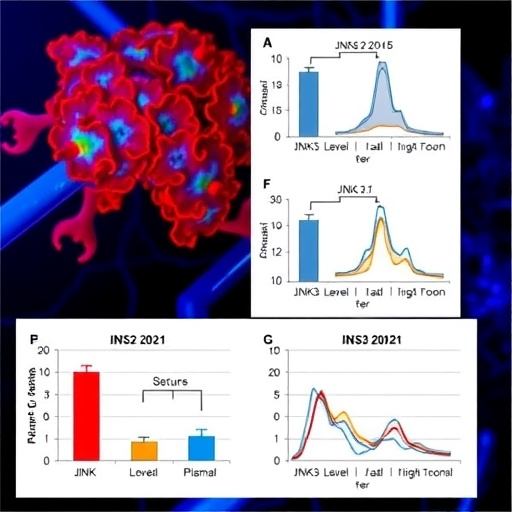A groundbreaking study led by researchers from the Icahn School of Medicine at Mount Sinai and the University of Copenhagen has unveiled crucial genetic variations that could elucidate why obesity impacts individuals so differently. Published in the prestigious journal Nature Medicine, this extensive research delves deeply into the complex genetic architecture underlying obesity, revealing that it is not a uniform condition but a constellation of distinct subtypes defined by unique genetic signatures and health risks.
The international team analyzed a massive dataset comprising genetic and health information from over 450,000 participants, primarily of European descent, collected through the UK Biobank. Through a comprehensive genome-wide multi-trait screening approach, they systematically examined genetic loci associated with body fat distribution alongside cardiometabolic traits such as lipid profiles, glucose metabolism, and blood pressure. This integrative method allowed for the identification of 205 specific genetic regions that remarkably link increased body fat with preserved metabolic health.
A particularly novel aspect of the study is the development of a sophisticated genetic risk score that quantifies the cumulative influence of these protective variants. Individuals who scored higher on this scale were genetically predisposed to obesity but paradoxically exhibited fewer metabolic complications commonly associated with excess adiposity. These findings challenge the conventional understanding that obesity uniformly portends elevated risk for diabetes, hypertension, and heart disease, suggesting instead that underlying genetic mechanisms modulate fat cell function to shield certain individuals from such outcomes.
Notably, these protective effects manifested early in life. Children harboring these genetic variants displayed higher body fat percentages, yet did not exhibit the anticipated metabolic disturbances such as insulin resistance or dyslipidemia. This early-life genetic influence hints at an inherent biological divergence in the pathophysiology of obesity itself, which may have profound implications for pediatric health monitoring and intervention strategies.
The study further categorized obesity into eight distinct subtypes, each correlated with a different genetic profile and risk spectrum for metabolic and cardiovascular diseases. These subtypes underscore that obesity is a heterogeneous condition, shaped not only by environmental and lifestyle factors but also by nuanced genetic predispositions that affect fat storage, distribution, and cellular behavior. Such stratification holds potential for transforming clinical practice by allowing physicians to predict which patients are more likely to develop complications and tailor treatment plans accordingly.
From a mechanistic perspective, these genetic findings suggest that alterations in adipocyte biology—how fat cells grow, differentiate, and communicate with other tissues—play a pivotal role in determining metabolic health outcomes in obese individuals. The protective variants appear to promote favorable fat cell functions, such as enhanced lipid storage capacity and reduced inflammation, which mitigate the risk of insulin resistance and cardiovascular disease even in the presence of obesity.
Despite these promising revelations, the researchers emphasize that obesity remains a serious health concern worldwide. They caution that possessing these protective genetic variants does not render obesity harmless; lifestyle factors such as diet quality, physical activity, and psychosocial elements continue to be critical for maintaining overall health and mitigating disease risk.
The scope of this research was primarily limited to individuals of European ancestry, and the team acknowledges the urgent need to expand analyses to more genetically diverse populations. This future work is essential to ensure that genetic insights are broadly applicable and beneficial across different ethnicities and global populations, particularly given the variable prevalence and impact of obesity worldwide.
By disentangling the genetic components that separate metabolically healthy obesity from its harmful forms, this study sets the stage for a more personalized medicine approach to obesity management. Early identification of genetic risk profiles could enable clinicians to implement targeted preventive measures, develop novel therapies that mimic protective genetic pathways, and refine diagnostic tools to better stratify patients based on their true risk.
Moreover, the application of artificial intelligence and advanced computational methods in this study highlights the power of integrating big data and genomics to uncover complex disease mechanisms. It exemplifies how multidisciplinary collaboration can accelerate discovery and translate genetic insights into actionable clinical strategies.
The implications of this research extend far beyond academic curiosity; they pave the way for reshaping public health approaches and medical paradigms regarding obesity. Understanding that obesity is a mosaic of subtypes challenges stigmatization and fosters a more compassionate, scientifically informed dialogue about this global health challenge.
As the field moves forward, the potential to harness these findings into effective interventions is immense. From pharmaceutical innovations that target specific genetic pathways to personalized lifestyle recommendations informed by individual genetics, the future of obesity treatment promises to be more precise, effective, and equitable.
In summary, this landmark study from Mount Sinai and its collaborators represents a profound advance in the genetics of obesity. It reveals the underlying biological diversity of obesity phenotypes and offers hope for mitigating the burden of obesity-related diseases through genetics-guided medical care from childhood onward.
Subject of Research: Genetic determinants of obesity and its metabolic subtypes
Article Title: Mount Sinai Study Reveals Genetic Clues Explaining Why Obesity Affects People Differently
News Publication Date: September 15, 2025
Web References: https://www.nature.com/articles/s41591-025-03931-0
Keywords: Obesity, Genetics, Metabolic Health, Cardiometabolic Traits, Adipocyte Biology, Personalized Medicine, Genetic Risk Score, Genome-wide Association Study
Tags: cardiometabolic traits and obesitygenetic factors in obesitygenetic risk score for obesitygenome-wide screening for obesityhealth risks associated with obesityindividual differences in obesity impactmetabolic health and obesityMount Sinai obesity studyobesity genetic variationsobesity subtypes researchUK Biobank obesity studyunique genetic signatures in obesity





